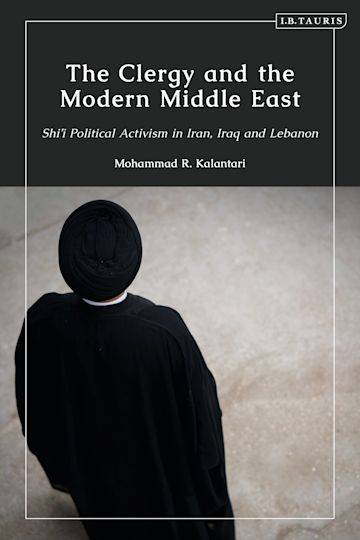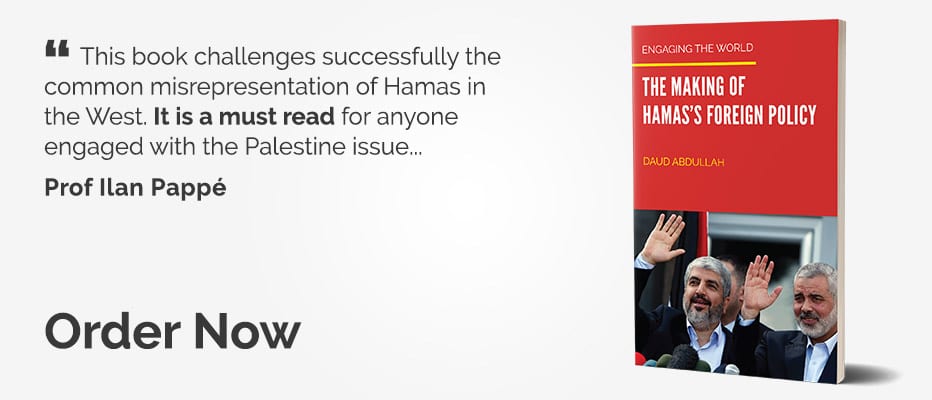It is often stated that within the world of Shia Muslim seminaries, the cities of Najaf in Iraq and Qom in Iran represent two contrasting camps in Shia scholarly stances on politics: one of quietism and the other of activism, respectively.
This simplistic narrative has not only been perpetuated by Western media and academia, but also embraced by some within the Shia community. However, Mohammad Kalantari, in his book, The Clergy and the Modern Middle East: Shi'i Activism in Iran, Iraq, and Lebanon, sheds light on the complexity of the situation. He argues that this oversimplification obscures the reality, which requires a deeper contextualisation of the political realities faced by the influential Shia clerical elites in the Middle East, particularly at a time when there is a perceived "Shi'i supremacy in the region".
The implications are far-reaching, given that this bipolarisation "misunderstands both Shi'i political doctrine and the contemporary political history of the Middle East."
According to the author, "there is no meaningful and strategic divergence among Shi'i clerical elites regarding how they deal with the political leadership of their respective communities." Rather, these are tactical differences, as opposed to strategic without any bearing on Shia doctrine. Furthering his argument, Kalantari suggests that the deciding factor, as to whether a Shia mujtahid becomes politically active or not, "depends on their perception of whether a given opportunity structure enables or constrains social mobilisation."
Kalantari elucidates this through applying the concept of "opportunity structure" which he applies to three of the most important and notable case studies on Shia political activism in the region; first and foremost, Iran's Islamic Revolution of 1979, which "marked the highest level of the clerical elite's political activism in the history of Islam", followed by Iraq post-Saddam Hussein, whereby Ayatollah Sistani "played an undeniable role in bringing about the triumph for the Shi'i community", with the first Shia-governed modern Arab state. Lastly, the rise of Hezbollah "transformed the ever-quiescent Shi'i minority in Lebanon into one of the most politically active communities in the region."
Before delving into the intricacies of the main theme, the book sheds light on the dynamics and history of the Shia clergy in the Major Occultation Era – that is since 941 C.E. until the present, with the clerical elite serving as protectors of the community, safeguarding their religious and political interests in the absence of the 12TH Imam through their exercise of ijtihad, or independent reasoning on jurisprudential issues. For example, the fall of Baghdad due to the Mongol invasion, brought about an unprecedented opportunity for the Shia clergy to exert their influence. Prior to this, "the majority of religious elites remained politically quiet."
It was interesting to read how the apparent "apolitical" (which the author clarifies should be understood as "political acquiescence") stance, synonymous throughout much of Shia Islam's history, could arguably be traced, back to the Imams themselves, with the first Ali ibn Abi Talib's whose "seemingly quietest posture" with regards to the previous caliphs was conditional. Despite lacking widespread political legitimacy, the Imams became involved covertly "and only at times it was necessary in order to protect the Shi'i community's interests."
This has been mirrored in the contemporary age with the Shia clergy, in effect acting as de-facto representatives, or the closest thing to them, and could help explain their varied positions on whether to actively engage or withdraw from overt political activism.
Political Thought in Contemporary Shi'a Islam: Muhammad Mahdi Shams al-Din
In all case studies, there is a trend of watershed uprisings and protest movements, which ultimately laid the foundations or paved the way to the current status-quo. For Kalantari, "The Shi'i political revival in the region during the last century had its roots both in the Persian Constitutional Revolution of 1905-7 and the uprisings against the British and French imperialism in Iraq and Lebanon."
It was especially appreciated to see, at the end of each case study chapter, a diagram depicting the political trajectory between "quiestist" and "activist" among the most prominent clerics throughout the years, based on the opportunity structure.
As I understand, the introduction aimed to partially shed light on the thoughts of the clerical elites themselves regarding the mainstream dichotomy on the political postures. The book's foundation on primary Shia sources, including "in-depth interviews with Shi'i clerics" in the three countries of interest, holds a lot of promise for the reader.
However, I found that this potential was not fully realised, with only a brief reference made to an interview the author conducted with Ayatollah Sistani's son, Sayyid Muhammad Reza Sistani, in the closing pages of the book.
The Clergy and the Modern Middle East presents a compelling case, challenging long-held and oft-repeated misunderstandings about the dynamics within the Shia clerical establishment. The book offers a better understanding of the fluidity of political stances held by some of the most powerful and influential leaders in the region.
Moreover, it delves into the intriguing age of transnational Shia networks who, in essence, share a strategic alignment. The explicit inclusion of the in-depth interviews with the Shia clerics would have provided readers with deeper insights into the perspectives of these influential figures. That said, the book still succeeds in offering a comprehensive understanding of current geopolitical and theopolitical affairs in the modern Middle East, particularly within the context of increasingly important transnational Shia networks.
The Caliph and the Imam: The making of Sunnism and Shiism




